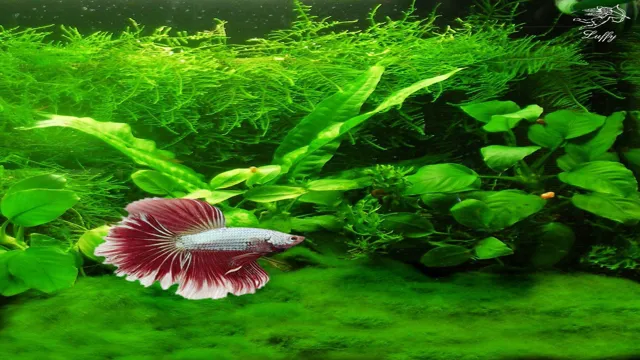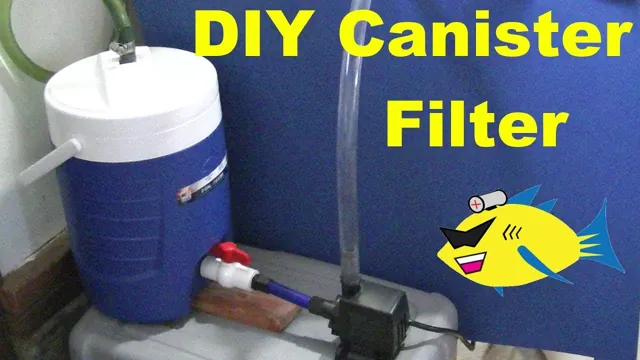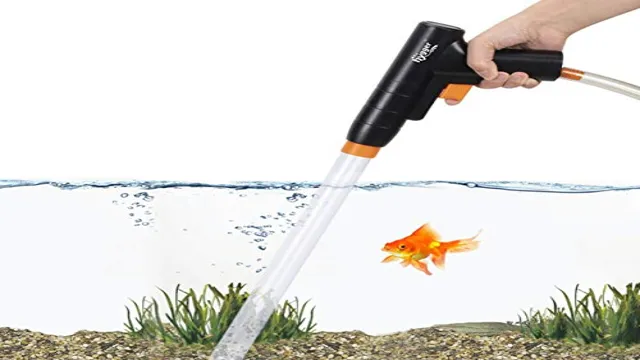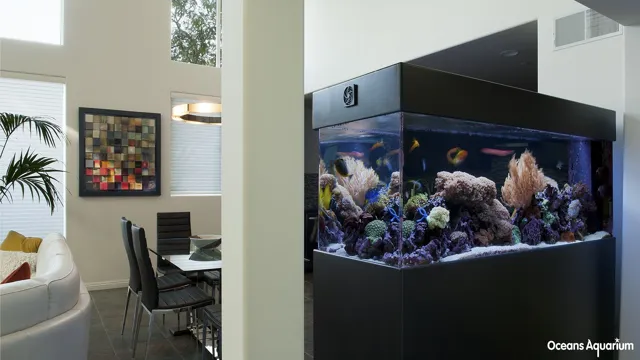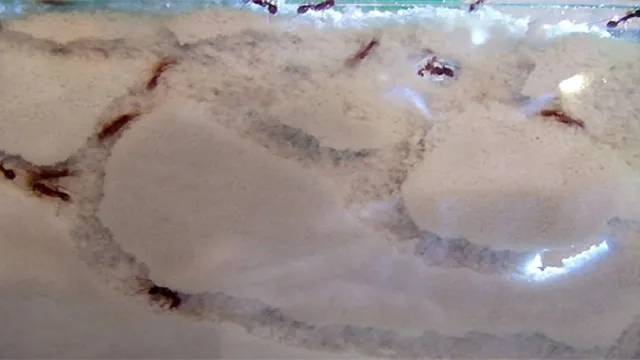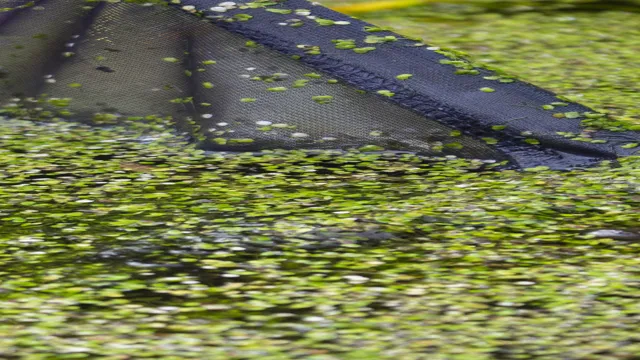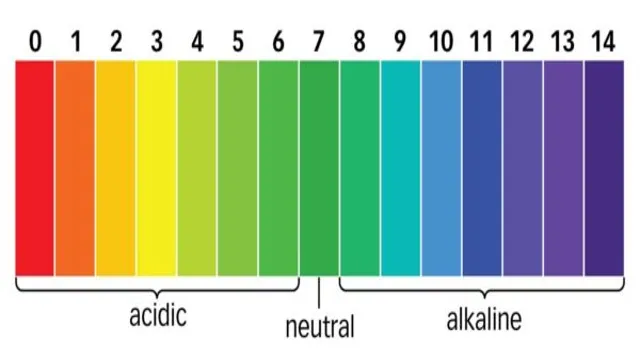Welcome to the world of freshwater aquarium plants! If you’re new to the hobby, you might be wondering what kind of plants to include in your tank and how to care for them. Don’t worry, though – with a little research and some patience, you can create a thriving aquatic ecosystem that will be both beautiful and beneficial for your underwater pets. Not only do freshwater plants add aesthetic appeal to your aquarium, but they also provide a range of benefits for your aquatic animals.
From oxygenating the tank to providing hiding places for young fish, plants play a crucial role in maintaining a healthy aquarium. In this guide, we’ll cover everything you need to know about selecting, planting, and maintaining freshwater aquarium plants. We’ll discuss different types of plants and offer tips on how to ensure they thrive in your tank.
Whether you’re looking to create a natural-looking aquascape or simply add a touch of green to your aquarium, this guide has you covered. So, sit back, relax, and get ready to learn about the wonderful world of freshwater aquarium plants!
Why plants?
Looking to enhance your freshwater aquarium? Adding live plants not only adds aesthetic appeal, but also provides a range of benefits to your aquatic ecosystem. Plants help regulate water quality by absorbing excess nutrients and producing oxygen through photosynthesis. This improves the overall health of aquarium inhabitants and reduces the likelihood of algae growth.
Additionally, plants offer shelter and hiding places for fish and invertebrates, which can reduce stress levels and increase breeding behaviors. When choosing freshwater aquarium plants, it’s important to consider factors such as lighting, water pH, and water hardness to ensure optimal growth and health. There are a variety of beginner-friendly plants to choose from, such as Java fern and Anubias, as well as more advanced options like carpeting plants and stem plants.
By incorporating live plants into your aquarium setup, you can create a natural and vibrant underwater world for your aquatic pets to thrive in.
Benefits of having plants in your aquarium
When it comes to aquariums, adding plants can bring a lot of benefits to both the fish and the owner. Why plants? Well, first and foremost, plants contribute to the overall health of an aquarium. They provide oxygen and absorb carbon dioxide, which is essential for the survival of the aquatic life.
Additionally, they help maintain the water quality by filtering out harmful toxins, chemicals, and pollutants that can harm your fish. But that’s not all, adding plants to your aquarium can also create a visually appealing environment. It can help create a natural-looking habitat, which can be relaxing and enjoyable to watch.
Furthermore, it can even reduce stress levels in fish, making them more comfortable in their environment. Having plants in your aquarium can also create a natural cycle of life. Fish produce waste, which plants then use as food, converting it into oxygen and nutrients that benefit the fish.
This is known as the nitrogen cycle and is essential for maintaining a healthy aquarium. In summary, adding plants to your aquarium provides multiple benefits, from improving water quality to creating a beautiful, natural environment. So, it’s worth considering incorporating some greenery into your underwater world.
Your fish will thank you for it!
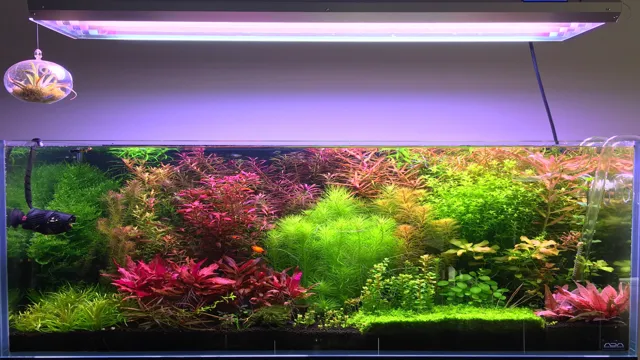
How plants contribute to your aquatic ecosystem
Plants are an essential part of maintaining a healthy aquatic ecosystem. They provide numerous benefits, including shelter for fish and other aquatic creatures, filtration of toxins, oxygenation of water, and regulation of water temperature. Plants also aid in nutrient cycling by absorbing excess nutrients, such as nitrogen and phosphorus, which helps prevent algal blooms and other harmful effects of nutrient overload.
Choosing the right plants for your aquatic environment is crucial, as different types of plants have different needs and provide different benefits. For example, submerged plants like Anacharis are great for oxygenation and nutrient absorption, while floating plants like Water Lettuce and Water Hyacinth provide excellent cover and help regulate water temperature. Incorporating plants into your aquatic ecosystem is not only aesthetically pleasing but also vital for maintaining a healthy and thriving environment for your aquatic creatures.
Selecting Plants
When it comes to freshwater aquarium plants, selecting the right ones is crucial for the health and success of your tank. The first step is to do your research and choose plants that are appropriate for the size of your tank and the level of lighting you have. Some popular options for beginner-friendly plants include Java moss, Anubias, and Cryptocoryne. (See Also: How to Make DIY LED Lights for Aquarium: A Step-by-Step Guide to Enhance Your Aquatic Experience)
It’s also important to consider the growth rate and maintenance requirements of each plant, as some may grow quickly and require more pruning, while others may need additional fertilizers to thrive. Ultimately, you want to choose plants that complement the aesthetic of your tank and create a healthy, natural environment for your aquatic inhabitants. By selecting the right mix of plants, you can create a stunning underwater world that your fish will thrive in.
Determining plant compatibility with your fish
When it comes to creating a thriving aquatic environment for your fish, selecting the right plants is crucial. Not all plants are compatible with all types of fish, so it’s important to consider the specific needs and behaviors of your aquatic friends. One key factor to keep in mind is the pH level of your tank.
Some plants thrive in alkaline conditions, while others do better in acidic water. It’s also important to think about the size and temperament of your fish. Some fish are known for nibbling on plants, while others might uproot them altogether.
Take the time to research and ask for recommendations at your local pet store to find the best plants for your specific setup. By selecting the right plants, you can create a beautiful and functional aquatic ecosystem that meets the needs of both your fish and your plants.
Choosing plants that suit your aquarium’s lighting and water chemistry
Choosing the right plants for your aquarium can be a daunting task, but it is crucial to ensure that they will thrive in your tank. One of the most important factors to consider is your aquarium’s lighting. Some plants require a lot of light to grow, while others can thrive in low light conditions.
It’s important to research the needs of each plant to ensure it will receive the appropriate amount of light. Another factor to consider is your water chemistry. Some plants prefer acidic water, while others prefer alkaline water.
Make sure you test the pH of your tank and select plants that will thrive in your water conditions. It’s also important to consider the size and growth rate of each plant, to ensure they do not overcrowd your tank and hinder the growth of other plants. By selecting plants that suit your aquarium’s lighting and water chemistry, you can create a thriving and beautiful aquatic environment.
Ensuring proper spacing and arrangement of plants
When it comes to ensuring proper spacing and arrangement of plants, selecting the right ones can make all the difference. Start by considering the size and growth habits of each plant, as well as its individual needs for light, water, and nutrients. This will help you choose plants that are complementary and compatible with one another.
Think about how each plant will fit into the overall design scheme and consider different heights, textures, colors, and forms to create a dynamic and interesting garden. Remember, plants are like puzzle pieces, each one needing space to grow and flourish while fitting into the bigger picture. So, choose wisely and select plants that will work together harmoniously to create a beautiful and cohesive landscape.
Plant Care
Are you interested in having freshwater aquarium plants but don’t know where to start? Well, good news! Taking care of them is not as complicated as you may think. First, you need to make sure that your plants receive sufficient light. This means that you need to provide them with around 8-10 hours of light per day.
You can use fluorescent bulbs or LED lights specifically designed for aquarium plants. Secondly, you need to choose the right substrate. Plants need nutrients to grow, so the substrate must be rich in nutrients.
A good option is a soil-based substrate mixed with gravel/sand. Thirdly, you need to supplement your plants with fertilizers. This helps provide them with the necessary nutrients they need to grow healthy.
It is also essential to maintain a consistent water temperature and keep your aquarium clean. Regular water changes are necessary, and you should also trim your plants regularly to prevent overcrowding. With these tips in mind, you can be sure to have a thriving aquascape in no time.
Lighting requirements for plants
When it comes to taking care of plants, there are various factors to consider, and one of the most important is lighting. Different plants require different amounts and types of lighting to thrive. Some plants need direct sunlight, while others prefer shade or indirect light. (See Also: How to Build an Aquarium for Snails: A Comprehensive Guide for Beginners.)
If you have a plant that requires direct sunlight, it’s best to place it near a window that receives sunlight for a few hours each day. However, if you don’t have access to natural sunlight, consider using artificial lighting that mimics the spectrum of sunlight. LEDs are a popular option since they are energy-efficient and provide the right wavelengths of light for plant growth.
Keep in mind that some plants can be sensitive to light, so it’s essential to monitor their exposure and adjust accordingly. By paying attention to your plants’ specific lighting needs, you can ensure they receive the necessary light to thrive and grow healthily.
Setting up a proper filtration system
When it comes to plant care, having a proper filtration system is crucial to the health and well-being of your plants. Without it, contaminants and debris can accumulate in the water, leading to poor water quality and potential harm to your plants. A good filtration system should remove any impurities in the water, such as chemicals, minerals, and bacteria, to ensure that the water is clean and safe for your plants to thrive in.
There are several types of filtration systems available, including mechanical, biological, and chemical filters. Mechanical filters work by trapping debris and sediment in a physical barrier, while biological filters use beneficial bacteria to break down harmful chemicals and contaminants. Chemical filters, on the other hand, use activated carbon to remove impurities.
To set up a proper filtration system for your plants, it’s important to choose the right type of filter for your specific needs. Consider factors such as the size of your aquarium or hydroponic system, the types of plants you’re growing, and the amount of waste and debris that’s produced. It’s also important to regularly maintain your filtration system by cleaning or replacing the filter media, and monitoring water quality levels to ensure that your plants are getting the nutrients they need to thrive.
Overall, investing in a high-quality filtration system for your plants is an important step in ensuring their health and longevity. By keeping your water clean and free from harmful contaminants, you’ll be setting your plants up for success and creating a beautiful and thriving indoor garden.
Fertilization techniques
Fertilization techniques for plants are fundamental to keep them healthy and growing. There are several different methods you can use, depending on the type of plant, soil, and its nutrient needs. One of the most common techniques is to apply organic fertilizers such as compost, manure, or bone meal.
These fertilizers are rich in nutrients that are slowly released over time, making them a great option for long-term plant growth. However, their potency can vary significantly, so it’s essential to follow dosage instructions carefully to avoid over-application. Another technique is to use chemical fertilizers, which are designed to provide plants with specific nutrients.
These fertilizers come in different ratios, such as N-P-K, which stands for nitrogen, phosphorus, and potassium. The ratio you choose will depend on the needs of your plants and soil. These fertilizers often yield quicker results, but they can also be harmful to the environment if overused.
Finally, there’s foliar feeding, a technique that involves spraying fertilizer directly onto plant leaves. This method can rapidly provide plants with the nutrients they need, but it’s essential to ensure the fertilizer is diluted and applied carefully to avoid damage to the leaves. In conclusion, fertilization is an essential part of plant care, and there are many techniques you can use for best results.
Whether you opt for organic or chemical fertilizers, or use foliar feeding, ensure to follow instructions and use appropriately to keep your plants healthy and thriving.
Potential plant diseases and treatment options
As a plant owner, it’s important to be aware of potential plant diseases and how to treat them. One common plant disease is powdery mildew, which presents as a white powdery substance on leaves and stems. To treat powdery mildew, try reducing humidity and increasing air flow around the plant.
Another disease to keep an eye out for is root rot, which can be caused by overwatering or poor drainage. To prevent root rot, make sure your plants are in well-draining soil and only water when the top layer of soil is dry. If you do suspect root rot, you may need to repot the plant into fresh soil. (See Also: How to Make Water Churn in Small Aquarium: Tips for Creating Optimal Water Circulation System)
Curling or yellowing leaves can also indicate a potential problem, such as nutrient deficiency. In this case, adjust your plant’s fertilizer or nutrient levels accordingly. By staying attentive and proactive, you can help your plants stay healthy and thrive.
Conclusion
In conclusion, caring for freshwater aquarium plants requires a balance of art and science. With proper lighting, fertilization, and pruning techniques, your plants will thrive and add a beautiful touch of nature to your aquarium. Just remember that while plants may be low maintenance compared to fish, they still require attention and TLC to reach their full potential.
So take the plunge and dive into the world of freshwater aquascaping – your plants (and your fish) will thank you for it!”
FAQs
What types of plants are suitable for a freshwater aquarium?
Some commonly used freshwater aquarium plants are Java moss, Anubias, Amazon sword, Hornwort, and Java fern.
How do I plant freshwater aquarium plants?
First, rinse the plant’s roots and remove any damaged or dead leaves. Next, place the plant in the substrate, making sure the roots are buried. Cover the roots with substrate, leaving the rhizome exposed.
What kind of lighting do freshwater aquarium plants need?
Most freshwater aquarium plants require moderate to high levels of light. LED lights are the most commonly used, and the intensity and duration of lighting depend on the type of plant.
How often should I fertilize my freshwater aquarium plants?
Regular fertilization is essential for the healthy growth of freshwater aquarium plants. It is recommended to add fertilizer once a week or as needed based on your plants’ growth rate and the nutrient availability in the water.
How can I prevent algae growth on my freshwater aquarium plants?
Regular water changes, optimizing lighting and nutrient levels, and adding algae-eating fish or snails can help prevent algal growth on your freshwater aquarium plants.
How do I trim freshwater aquarium plants?
Pruning is necessary to maintain the shape and health of freshwater aquarium plants. Use sterile trimming tools and gently trim off the parts to be removed. Make sure not to cut too much, as it can damage the plant.
Can freshwater aquarium plants survive without CO2 injection?
Yes, some freshwater aquarium plants can survive without CO2 injection, but the rate of growth and health of the plants may be affected. CO2 injection will promote better plant growth, color, and overall health.

